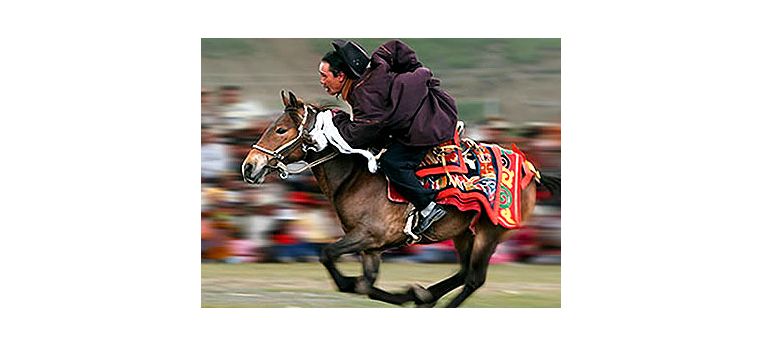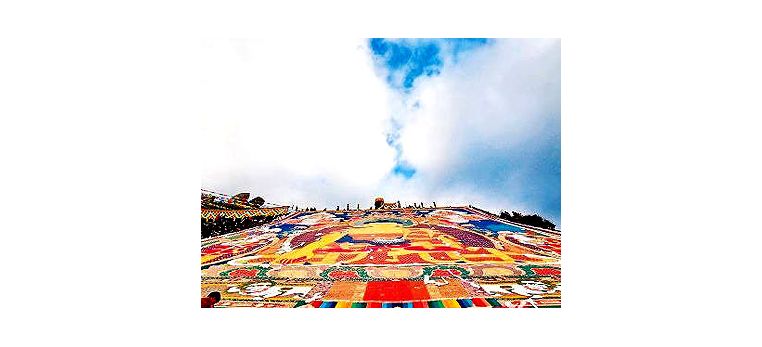

Tibetan festivals are held according to the Tibetan lunnar calendar,
which usually lags at least a month behind Gregorian calendar.
Tibetan New Year ( Losar)
Losar, the Tibetan New Year. The largest and most popular nonreligious
festival of the year, Losar is primarily a family-oriented festival,
celebrated in homes and with friends by eating special pastries and
drinking plenty of Chang(barely beer). On new year’s day in Lhasa
pilgrims throng the Jokhang temple and Potola palace to make offerings
of butter in the burning lamps.
Guthok Festival
A day for exorcising the evil form the old year so the New Year will
begin on a good note. Tibetans busily clean their homes, chasing away
the bad spirits to let the benevolent ones come in. Lama mask dances is a
symbolic performance of good triumphing over evil.
Monlam Chemo Festival (Great Prayer Ceremony)
The Great Prayer Festival is celebrated on the 15th of the first month
every year. Monks from monasteries and local artists make various-shaped
butter flowers with colored butter in pyramids in front the Jokhang
Temple(Nowadays it’s holding in their own monastery).
Saga Dawa Festival
Saga Dawa is the biggest religious festival after Monlam Chemo, and
celebrates the enlightenment of Buddha and his entry into nirvana upon
his death. Thousands of pilgrims crowd into the Jokhang temple, and the
Lingkor circumambulation routes around Lhasa has a steady flow of
worshipers for the entire day.
Shoton Festival
Drepung Monastery Giant Thangka Festival. The large Thangka is displayed
for only a few hours early in the morning on a hill beside Drepung.
This marks the star of Yogurt Festival, after the Thangka comes down the
first opera dances are performed in the main courtyard. Seventh month,
first to seventh days: Shoton, the Yogurt Festival. Norbulingka is the
scene of a week-long picnic of eating and drinking, with Tibetan Opera
performances in the gardens and at other venues around town.
Bathing Festival
It is believed when the sacred planet Venus appears in the sky, the
water in the river becomes purest and cures diseases. During its
appearance for one week, usually the end of the seventh and beginning of
the eighth lunar months, all the people in Tibet go into the river to
wash away the grime of the previous year.
Horse-racing Festival
Horse race and archery are generally popular in Tibet, there are many
horse racing festivals in Tibet, Jyekundo,Nakchu and Litang are the
greatest. Gyantse enjoys prestige of being the earliest in history by
starting in 1408. Contests in early times included horse race, archery,
and shooting on gallop followed by a few days' entertainment or
picnicking. Presently ball games, track and field events, folk songs and
dances, barter trade are in addition to the above.